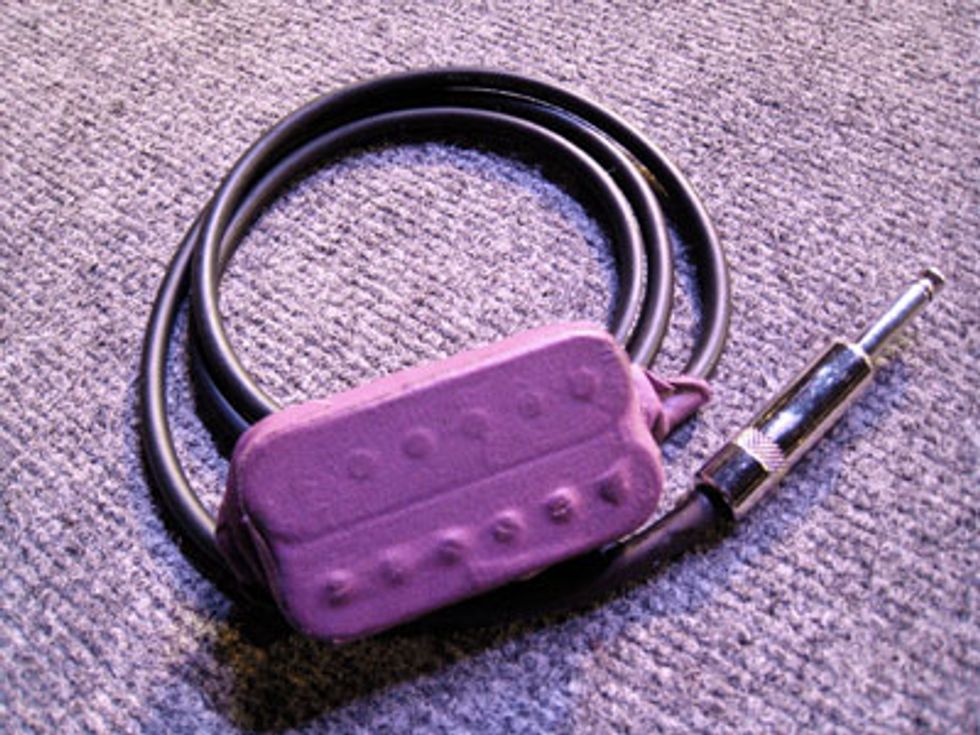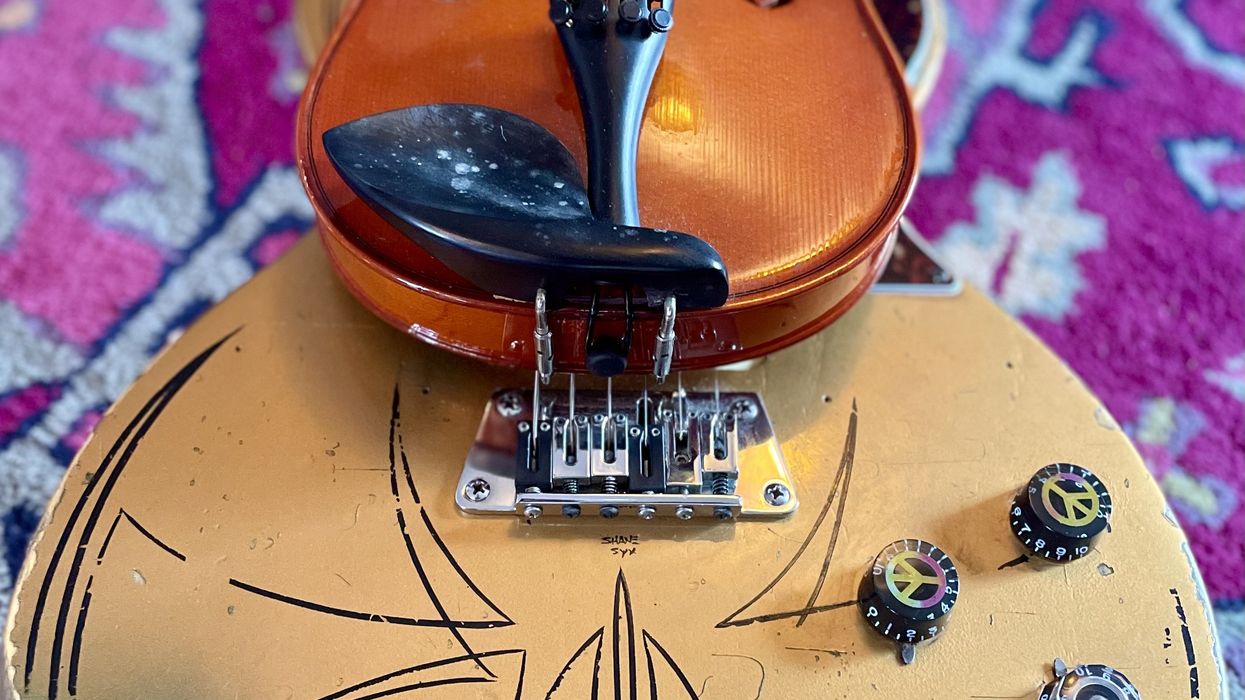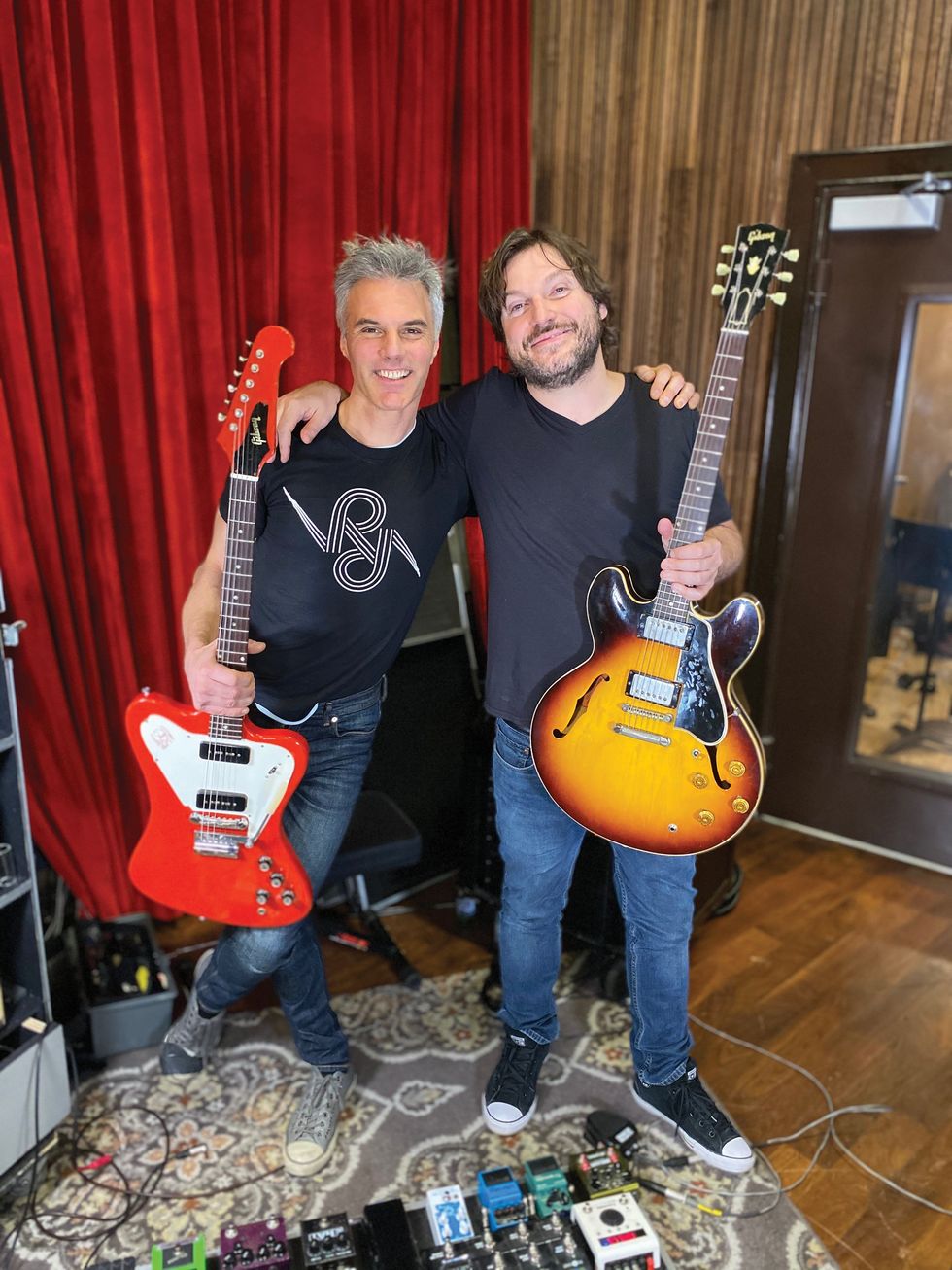So you're trying to tune an acoustic guitar while the band is playing
full throttle, huh? The roar of a PA shakes the body of an acoustic
to a point where it's really hard to get a true reading on a tuner.
Undersaddle pickups are the most commonly used, including
some with microphone blending capabilities. If you are using the
blending models, the volume you're trying to achieve determines
whether or not you can use the microphone that's attached to the
soundboard. The larger the venue, the more you'll dial the microphone
to a bare minimum and use a soundhole cover. This will help with
tuning in loud rooms, but it can still be tricky.
I can remember some of my earliest gigs where I would be scrambling
down to the last second before having to run a guitar out onstage
because the needle of my tuner would be jumping all over the place.
The guitar's pickup would hear the body vibrating from the volume
level of the PA as opposed to the string I was plucking. This, of
course, confused the tuner. At one point I had a small, rack-mounted
mixer that helped boost the signal and also allowed me to use the
headphone output to hear the guitar before passing it on to my artist.
It worked, but it definitely needed lots of improvement.
Aside from mixers, I've seen both techs and players use things like
compressors or even an overdrive pedal to help boost the signal to
their tuners by turning the gain down and the output wide open. These
options work fairly well, but about eight years ago I stumbled onto
something that would forever change the way I tuned during a live show.
I was at a gig in Maryland and got into an exchange of tips and how-tos with the headliner's tech. He offered to let me use this little
gadget he had rigged up to see if it would help me as much as it had
helped him. The idea was simple: solder the leads of a humbucker to a
short guitar cable with a 1/4" male end on the opposite end. Plug the
1/4" into your tuner and hold the humbucker over the soundhole. The
idea? A humbucker hears no ambient noise. It only hears a plucked
string and does not care anything about what the body of an acoustic
guitar is doing. The biggest difficulty I had that night was learning
to hold it while having a finger free to pluck a string.

This simple idea made tuning in high volumes so easy, I actually stood in front of the PA and tuned, just to see if I could do it. It worked beautifully with no problems whatsoever. The needle held true to the pitch of the string and never once did it jump around violently like it would have if the guitar had been plugged directly in.
I'm sure most of you have a drawer or bag full of pieces and parts that you've long forgotten about. Try looking there first, but if you can't find an old humbucker try your local music store. The repair guy there will more than likely have something laying around on his bench that he'll sell you at a good price. The best thing to get is a bridge pickup, and the hotter the better. The cable length is up to you. All of mine have been about 2 feet long, which proved to be plenty. After you solder the cable, zip tie the cable to the mounting screw lugs of the pickup for a strain relief. I always wrap a single layer of tape around the coils, but this isn't neccessary, I just do it to protect the wiring and cover any sharp edges on the base of the pickup. That's all there is to it. Plug the 1/4" end into the tuner and hold it over the strings. I promise you will get a truer signal than plugging in and tuning will be faster and more accurate.
Now for the warnings. First, if you find a very high output humbucker you'll need to be careful as to how close you hold it to the strings. A strong magnetic pull can affect the way the string oscillates and cause the string to go sharp. Try to hold the humbucker at least an inch above the string to avoid this. Second, if you decide to use this with electric guitars, try not to hold it directly above the guitar's pickups for the same reasons described above.
If you're a player and you tune your own instruments you can use this device as well. Mount the humbucker to something that will hold it at the same height of the soundhole of your guitar while you have it strapped on. This is especially easy if your acoustic has a volume control. Simply turn the volume down, walk up to the humbucker, tune, and you're right back into the next song.















